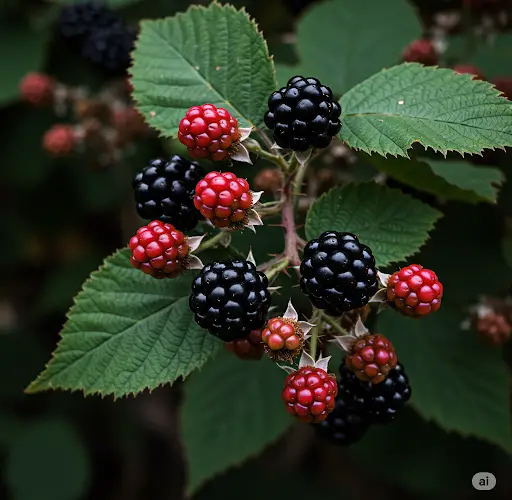Blackberries are a delicious and rewarding fruit to grow in your garden. Their sweet, juicy berries are perfect for fresh eating, jams, desserts, and more. However, to get a bountiful harvest year after year, proper care and preparation during the autumn months are essential. By following a simple, effective autumn routine, you can significantly boost your blackberry yield—often doubling it—and keep your plants healthy and productive for many seasons to come.
Why Autumn Care Matters for Blackberries
Blackberry plants are perennials that fruit on second-year canes, known as floricanes. After producing fruit, these canes die back, while new primocanes grow the following season. Autumn is the ideal time to prepare your plants for winter dormancy and encourage vigorous growth next spring.
Proper autumn care improves the root system, prevents disease, and promotes strong cane development. Neglecting this period can lead to weak plants, fewer berries, and increased susceptibility to pests and diseases.
Step 1: Prune Dead Canes After Harvest
Once your blackberry harvest finishes in late summer or early autumn, the first step is to prune dead floricanes.
-
Identify and remove spent canes: These are the woody stems that bore fruit this season and are now brown and brittle.
-
Cut them back to ground level: Removing dead canes helps reduce disease risk and frees up space for new growth.
-
Leave healthy primocanes: These are the green, vigorous new canes that will produce fruit next year.
Pruning dead canes promptly encourages better air circulation and light penetration, key factors for a healthy crop.
Step 2: Clear Weeds and Debris
After pruning, clear away weeds, fallen leaves, and any plant debris around the base of your blackberry bushes.
-
Weeds compete with blackberries for nutrients and water.
-
Debris can harbor pests and diseases.
Keeping the area clean reduces pest pressure and promotes healthy growth as the plants enter dormancy.
Step 3: Mulch to Protect Roots and Retain Moisture
Applying mulch in autumn is critical to protect blackberry roots from cold temperatures and temperature fluctuations during winter.
-
Use organic mulch like straw, shredded leaves, or compost.
-
Spread a 3-4 inch layer around the base of the plants, keeping mulch a few inches away from the canes to prevent rot.
-
Mulch helps retain soil moisture, regulate soil temperature, and improve soil structure as it decomposes.
Step 4: Feed Your Plants for Strong Growth
Nourishing your blackberry bushes in autumn lays the foundation for vigorous growth in spring.
-
Apply a balanced, slow-release fertilizer formulated for fruiting shrubs.
-
Alternatively, use well-rotted compost or organic fertilizers rich in phosphorus and potassium to encourage root development and flower bud formation.
-
Avoid high-nitrogen fertilizers in autumn, as they promote leafy growth that can be damaged by frost.
Step 5: Inspect and Manage Pests and Diseases
Before winter sets in, carefully inspect your blackberry plants for any signs of pests or diseases.
-
Common problems include spider mites, aphids, cane borers, and fungal diseases like powdery mildew and cane blight.
-
Remove any infected canes or leaves to prevent spread.
-
Consider applying organic treatments such as neem oil or insecticidal soap if necessary.
-
Practicing good hygiene and removing debris will also help reduce pest and disease buildup.
Step 6: Support Young Canes
If you grow blackberries on trellises or supports, secure young canes properly before winter.
-
Tie canes loosely to prevent wind damage.
-
Training canes to grow horizontally encourages more fruiting buds to develop.
Proper cane support reduces cane breakage and optimizes fruit production next season.
Step 7: Plan for Winter Protection if Needed
In colder climates, additional winter protection may be necessary to prevent root and cane damage.
-
Consider covering plants with burlap or frost cloth.
-
Add extra mulch for insulation.
-
In very harsh zones, protect newly planted bushes with temporary cold frames or cloches.
Bonus Tips for Doubling Your Blackberry Harvest
-
Plant new varieties: Adding disease-resistant or everbearing blackberry varieties can extend your harvest period.
-
Regular watering: Keep soil moist but not waterlogged, especially during dry autumns.
-
Crop rotation: Avoid planting blackberries in the same spot repeatedly to prevent soil-borne diseases.
-
Soil testing: Conduct soil tests every few years and amend the soil as needed for optimum pH (around 6.0-6.5).
Conclusion
Following a thorough autumn care routine is key to doubling your blackberry harvest and keeping your plants healthy. By pruning, cleaning, mulching, feeding, and inspecting your bushes before winter, you set the stage for vigorous growth and abundant fruit the following season.
Taking the time to care for your blackberry plants in autumn is an investment that pays off with sweeter, juicier, and more plentiful berries. With these easy steps, you can enjoy a thriving blackberry patch and fresh fruit harvests for years to come.



